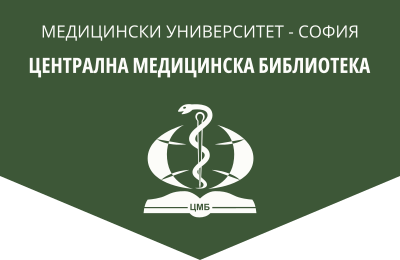High rate of rotator cuff injuries in patients with anterior shoulder instability – data from a single institution
Bulgarian Medical Journal, 2024, 18(3), 32-35.
N. Dimitrov1,2, Y. Nikolov1,2, I. Ivanov1,2, E. Simeonov3, T. Tsenkov1,2
1 Department of Orthopaedics and Traumatology, Medical University – Sofia
2 University Hospital of Orthopaedics “Prof. B. Boychev” – Sofia
3 Department of Orthopedics and Traumatology, Faculty of Medicine, Medical University – Pleven
Abstract. Introduction: The stability of the shoulder joint is determined by an anatomical complex of static and dynamic stabilizers. The muscles of the rotator cuff are part of the dynamic stabilizers and play a role in balancing the force couples around the glenohumeral joint. This creates a balance between functional mobility and stability of the shoulder, supported by negative intra-articular pressure. When injuries occur to the dynamic stabilizers (specifically the rotator cuff), treatment often focuses primarily on these pathologies, sometimes neglecting the role of static stabilizers. This can lead to lower levels of patient satisfaction and suboptimal results. The percentage of concurrent instability in patients with rotator cuff disease remains unclear. The aim of this study is to follow arthroscopically the patients operated for rotator cuff disease and determine the percentage of detected concurrent instability and its impact on rotator cuff lesions in a single institution. Materials and Methods: A retrospective study was conducted for the period from 2002 to 2018 in one institution. Criteria for the inclusion and exclusion of patients were established – specifically those arthroscopically treated for shoulder joint instability. The accompanying documentation of the patients was tracked and analyzed, including clinical examination data, preoperative and postoperative range of motion, imaging data, and functional results. Complications were also recorded. Results: A total of 326 patients with shoulder instability were operated on, including 297 with anterior instability, 24 with posterior instability, and 5 patients with multidirectional instability. Among those patients, 75 out of 326 had concurrent rotator cuff lesions. Specifically, 45 patients had complete ruptures of at least one of the rotator cuff muscles, 25 patients had partial ruptures of the cuff, and 5 patients had inconclusive objective data for lesions but exhibited objective clinical signs. Among the patients who underwent arthroscopic surgery for impingement syndrome, rotator cuff lesions, SLAP lesions, or other pathologies of the long head of the biceps brachii tendon and surrounding tissues, 30% were found to have varying degrees of instability. In 80% of these patients, additional surgical treatment was required in conjunction with the primary pathology treatment. Conclusion: Analyzing shoulder pathology as a shoulder complex, rather than as separate pathologies of its various structures, can prevent oversights and lead to quicker, more satisfactory outcomes for all patients, particularly those with high physical demands and athletic-technical skills.
Key words: rotator cuff, anterior shoulder instability, arthroscopy
Address for correspondence: Assoc. Prof. N. Dimitrov, MD, PhD, е-mail: dimitrovniki@abv.bg
